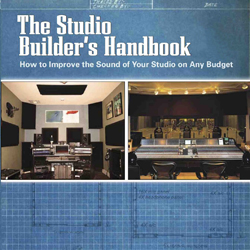I’m always surprised when I hear that someone just bought a pair of studio monitors just on someone’s recommendation or because they read that some engineer uses them.
I’m even more surprised when I hear about how haphazardly the listening tests were when they do get a chance to audition them.
Here’s an excerpt from The Studio Builder’s Handbook that provides some useful tips for choosing some monitors that you’ll love listening to for a long time.
So what do you look for when you’re choosing monitors? It’s surprising that so many monitors are chosen by a review or word of mouth, since they’re such a personal item.
Here are some things to think about before you purchase a set of speakers.
1) Don’t choose a monitor because someone else is using them.
Just because your favorite mixer uses a set of Tannoy Precision 8D’s, it doesn’t mean that they’ll be right for you too.
Everyone hears differently and has a different hearing experience. Plus, the match with your room might not be ideal, they might not be a good match with the type of music you work on, and if they’re unpowered, you may not have the same amp to drive them with as the reviewer, so they’ll sound different from what someone else hears.
2) Make Sure You Listen to the monitors before you buy them.
The pros take their time and listen to them under a wide range of conditions before they commit to a purchase, so why shouldn’t you?
It’s true that you might not live near a big media center with lots of pro audio dealers, and even if you do, you may not have a relationship with one that gets you a personal demo in your own studio.
That shouldn’t stop you from listening though. Take the trip to your local pro audio or music store and spend some time listening. Here’s what you should listen for when you evaluate a monitor:
• Listen for An Even Frequency Balance – Check to see if any frequencies are exaggerated or attenuated while listening to a piece of music that you’re very familiar with.
Listen especially to the mid-range cross-over area (usually about 1.5 to 2.5kHz), then to cymbals on the high end, vocals and guitars in the midrange, and bass and kick drum on the low end.
• Listen to the Frequency Balance At Different Levels – The speakers should have the same frequency balance at any level, from quiet to loud.
• Make Sure The Speakers Are Loud Enough Without Distortion – Be sure that there’s enough clean level for your needs.
Many powered monitors have built-in limiters that stop the speaker or amplifier from distorting, but this also keeps the system from getting as loud as you need it to be.
Be sure to listen to them at various volume levels to determine if they’ll be loud enough for your needs, if they will distort, or if their sound characteristics change dramatically at different volumes.





















